
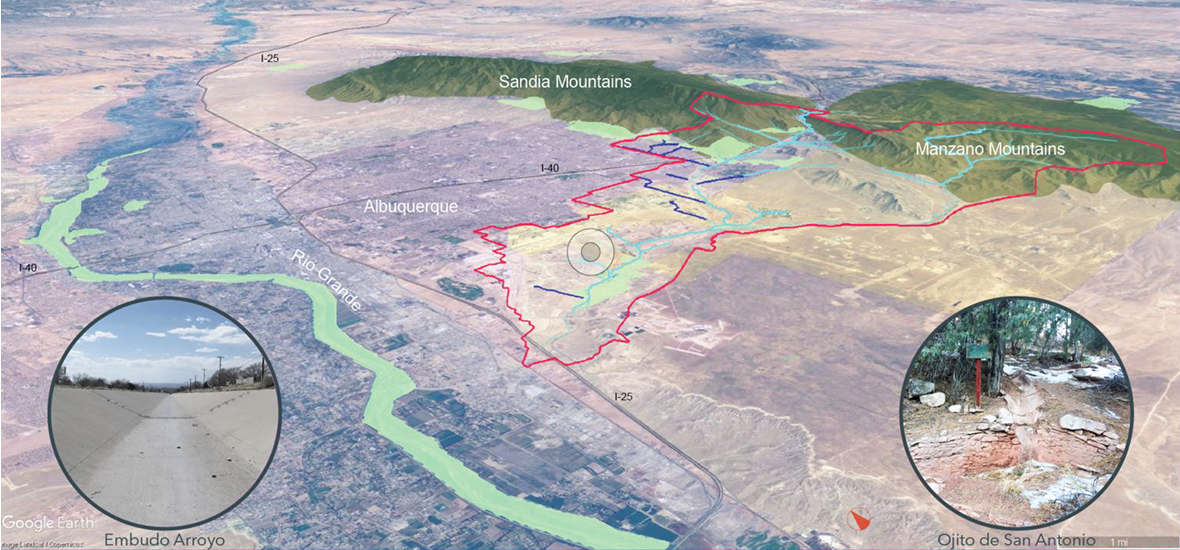
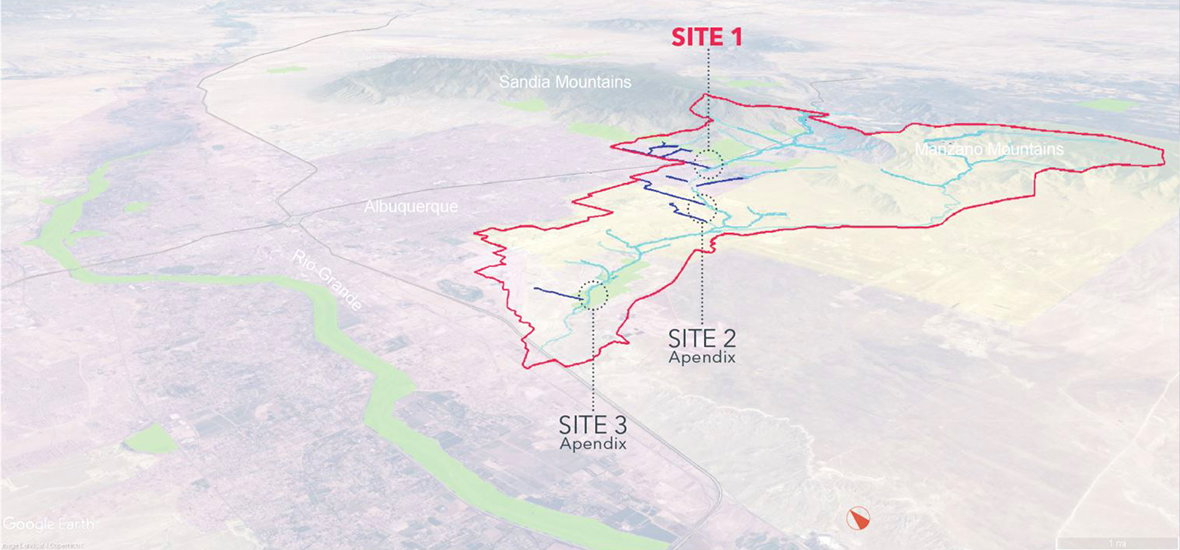
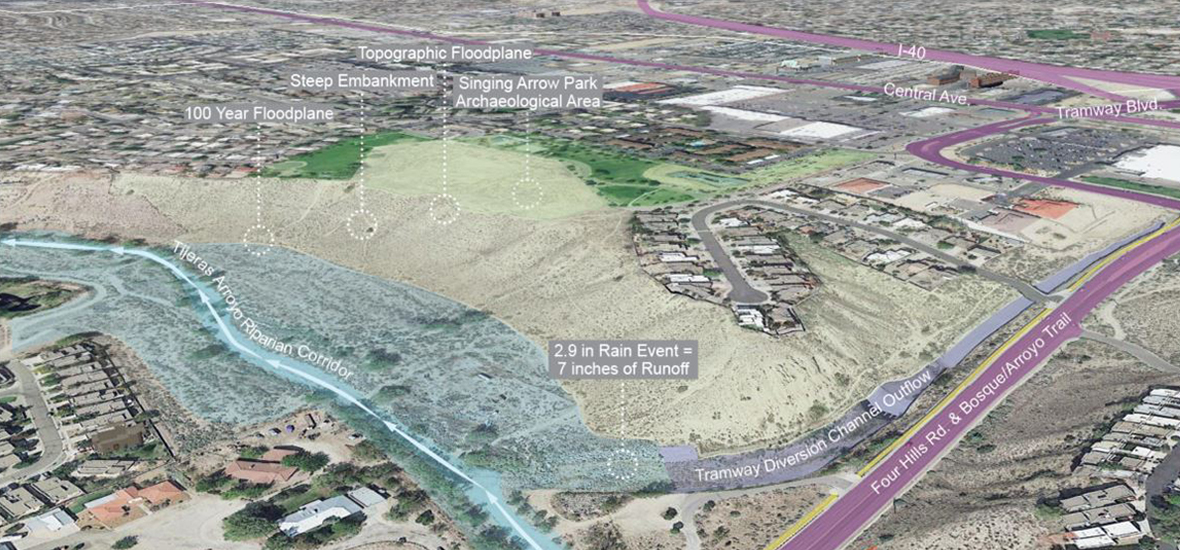

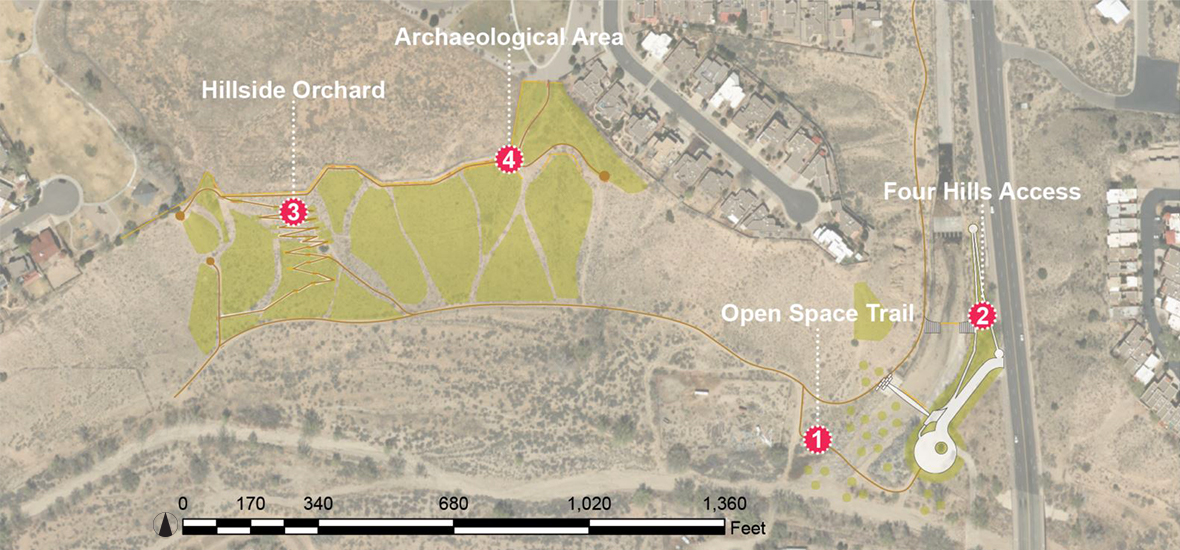
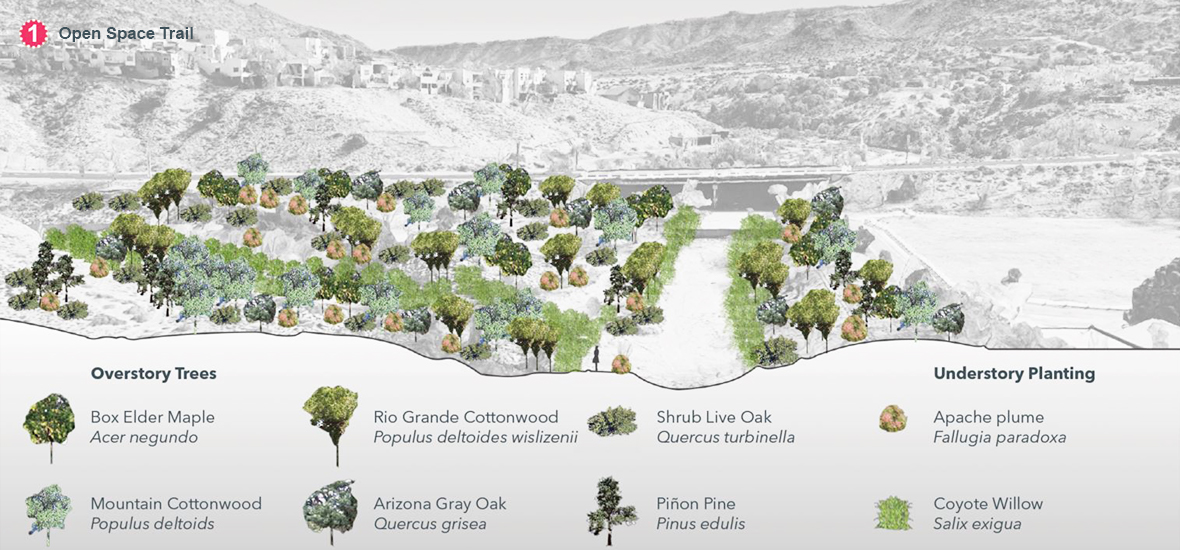

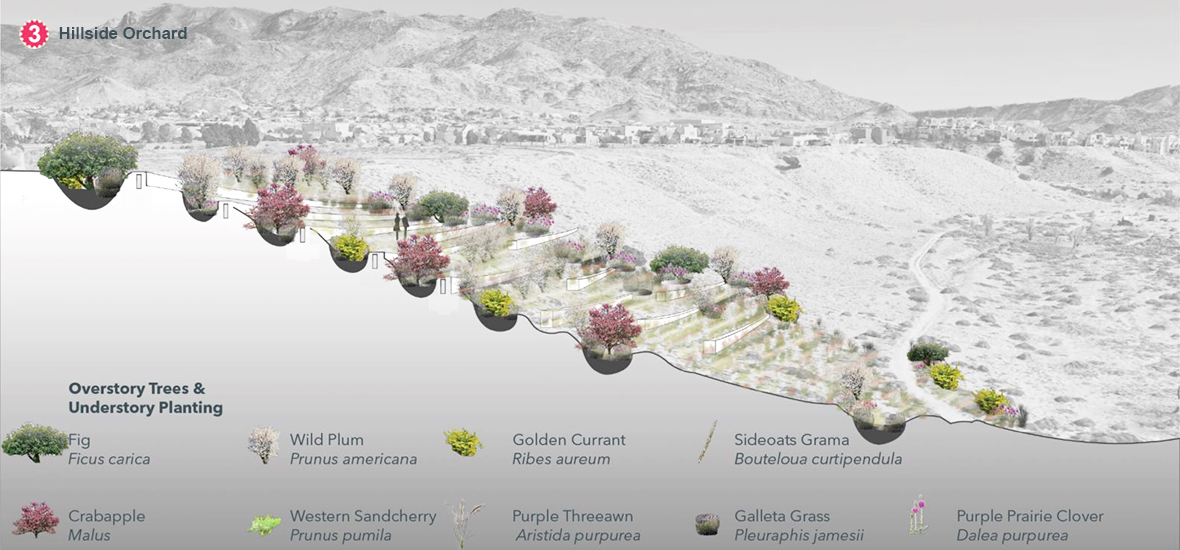
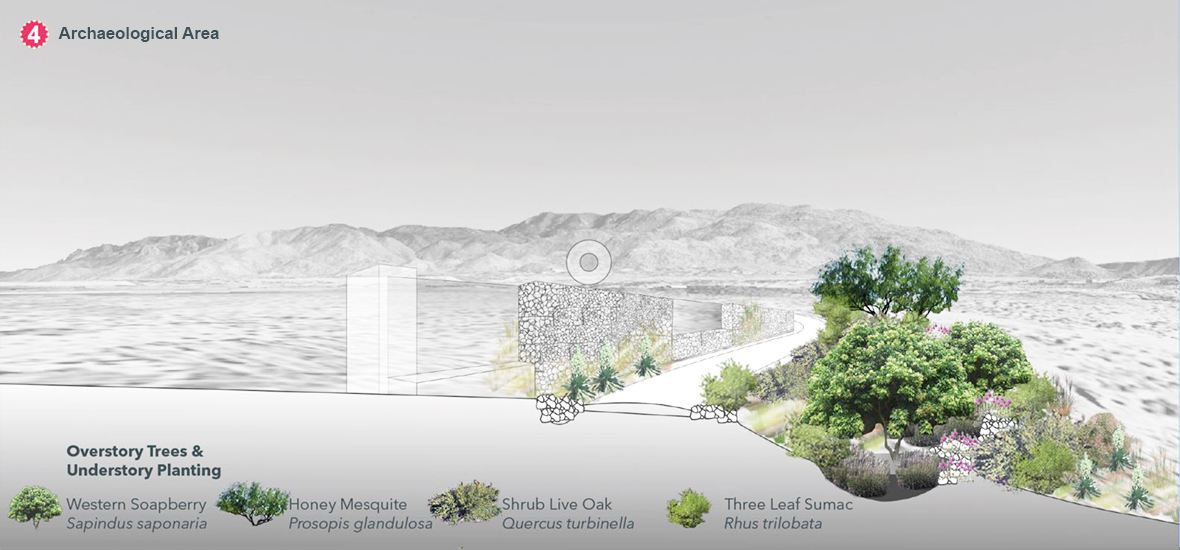
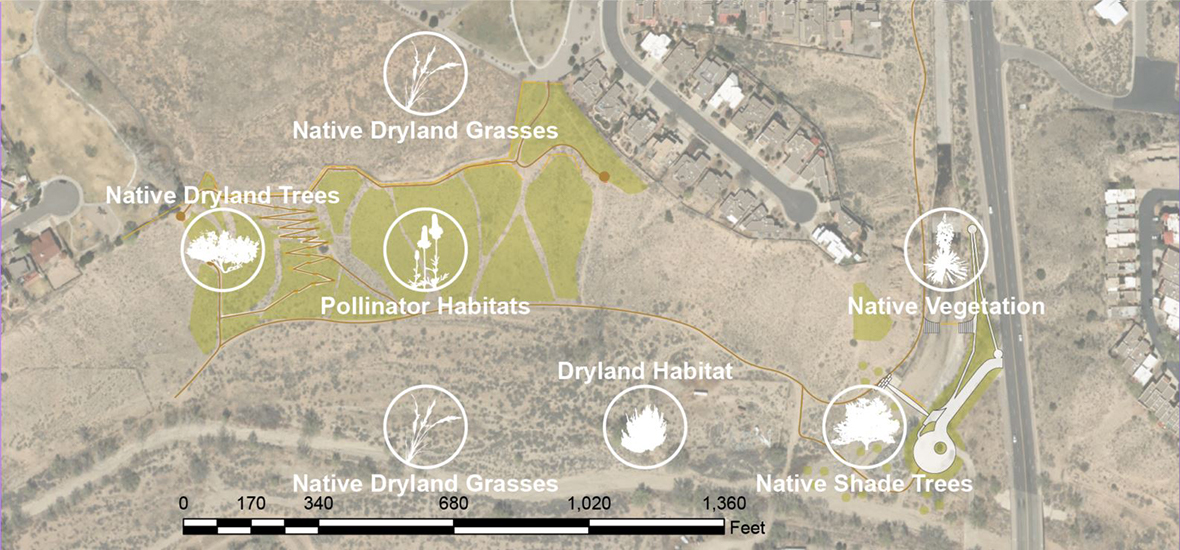
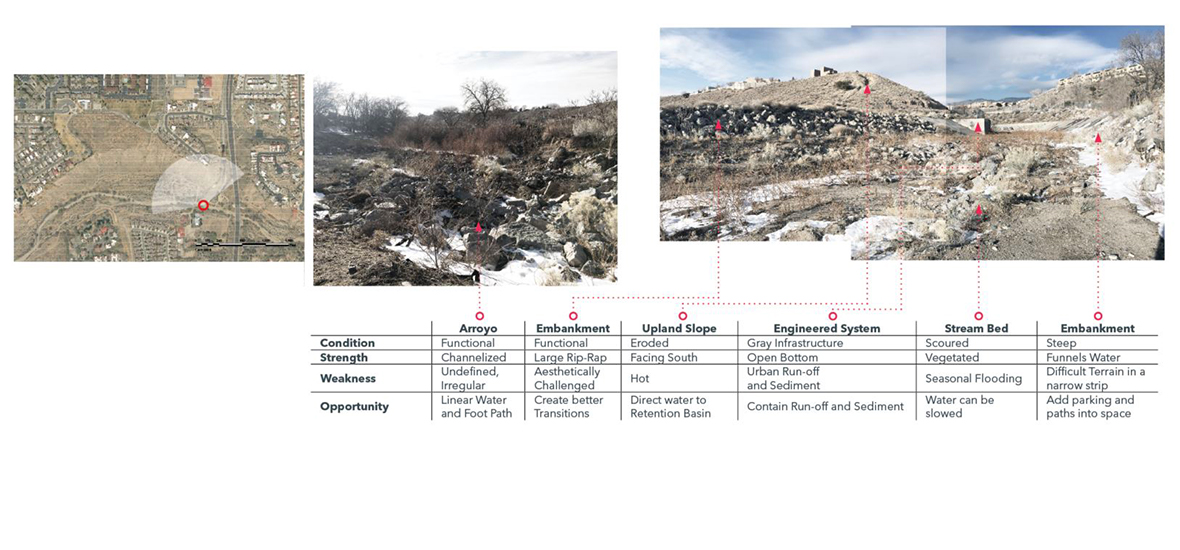
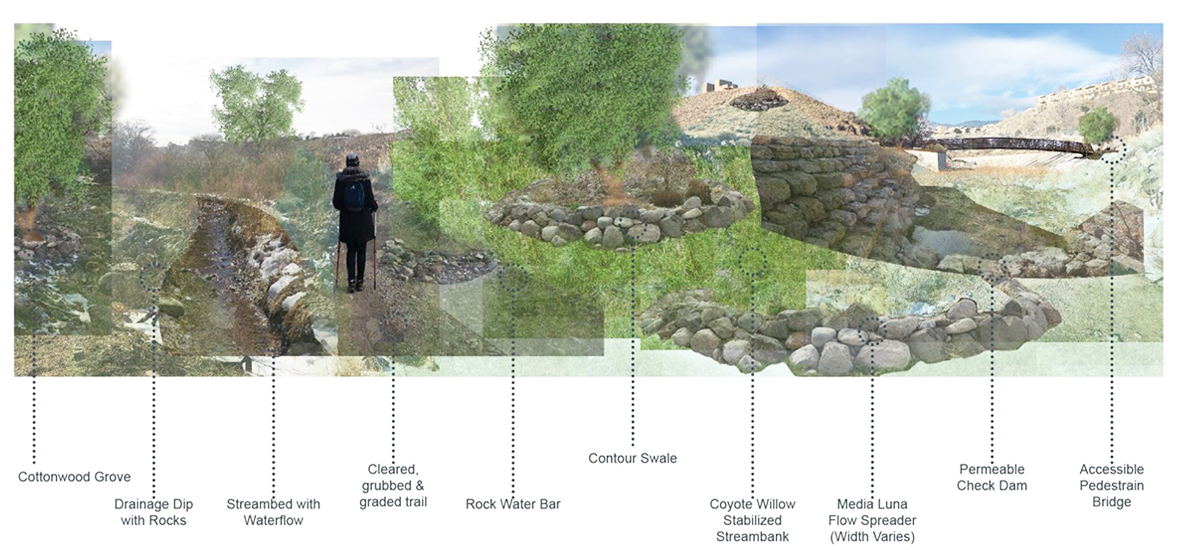
Tijeras Arroyo Resiliency Strategies
In this project, I examine construction techniques that work to slow stormwater run-off and redirect it for use by natural systems that, over time, impart greater biodiversity and resiliency to the Tijeras Watershed.
Thesis
A variety of low-impact constructed forms have the potential to slow down stormwater run-off so that it may be utilized by living systems. Constructions such as channels, check-dams, swales, dissipaters, terraces, oxbows, and other rock basins require minimal energy inputs to begin nutrient cycling and biomass production. Implementing these rock structures cumulatively over time, increases the resiliency of ecocultural landscapes of the Tijeras Arroyo watershed.
What is Resiliency?
Ecological resilience is the ability of an ecosystem to maintain its patterns of nutrient cycling and biomass production after being subjected to damage caused by disturbance.
What is an Ecocultural Landscape?
An Ecocultural Landscape is the product of natural systems and cultural processes that encourage sustainable and symbiotic relationships. Cultural adaptation toward and ecological prudence sets restraints on the use of plant and animal resources. The ethic runs counter to contemporary Western modes militated to wrest control of natural resources.
A Concurrence of Adaptations
Evident along the Tijeras Arroyo are the layers of historic adaptations to the semi-arid climate conditions that include flash flooding and long durations of drying. Subsequent generations will generate their own set of adaptations when balancing needs with the uncertainties of global warming. They would benefit from the relational thinking skills that inform an ecocultural perspective. The motivation for selecting sites at the intersection of natural and engineered streamflows is that water from both sources is necessary for ecological resiliency. The manner that water is conveyed reflects different value systems at work and forms a test case for how we should treat the planet’s greatest natural resource, water.
Conclusion
- Rock basin constructions slow stormwater run-off making it useful for living systems.
- Biodiversity is a marker of resiliency.
- Alternatively engineered systems mark our time as one of adaptive reckoning and re-use.
- Their construction acknowledges antecedents but does not prohibit other construction or adaptation from taking place.
- Because the forms are simple and the materials are commonplace, stewardship of land returns to community practice.
- Constructions can be implemented over the watershed scale for cumulative impact.
Project Details
Client : University of New Mexico School of Architecture + Planning, Department of Landscape Architecture Master's Project, Instructor: Sue Frye, Chair: Anthony Fettes, Committee: Alf Simon, Baker Morrow, and Katya Crawford..
Date : 05/06/2021
Skills : Landscape Design, Planning, Urban Innovation
Address :
https://saap.unm.edu/

